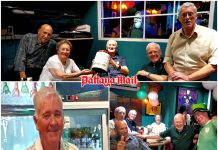Do you imagine women with long necks when you think about what the Karen hill tribe people? When Jim Soutar, from the Pakanyor Foundation, addressed the Pattaya City Expats Club on Sunday, December 4, he said that there are Karen women who look like that, especially around Chiang Mai and Chiang Rai, but that most Karen women do not have long necks. The long-necked Karen were refugees from Burma. Jim said that they were placed by vested interests in Karen villages to become a tourist attraction. These women now have the right to return to Burma, but the villages won’t let them go (because of the tourist revenues they would lose). Also, most that Karens that are not refugees now have identity cards, which means they have official status.
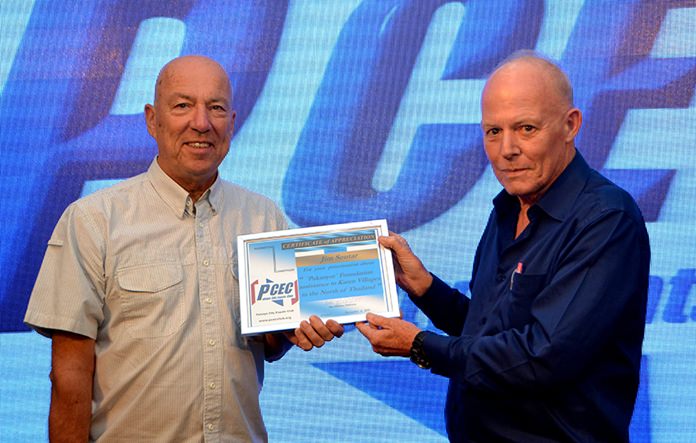
Jim was speaking to the club about the work of the Pakanyor Foundation, which was established in 1985 to assist Karen Villages in Northern Thailand to self-develop. After graduating from Oxford University, Jim joined the army and wound up working for the British Secret Service (MI6). In addition to working for the British army and MI6, Jim has also worked for major corporations such as British Aerospace, Vickers Defence Systems, Thames Water, and has done security consultancy for five regional governments and for the United Nations.
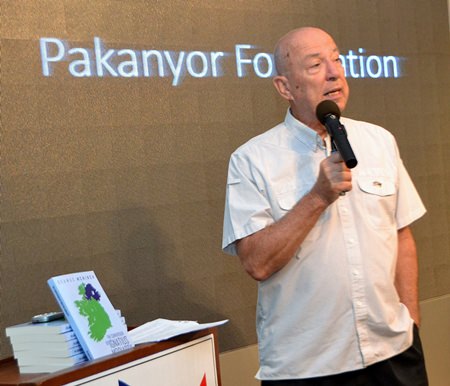
Jim said he became disenchanted with MI6 about the time he was posted to the British Embassy in Bangkok (1979-1983). He was asked by the Thai army if he would help them find student communists who had scattered after the massacre of 1976 and talk them into accepting an amnesty. This took him to Karen villages where many of the students were hiding. Within six months, he, and others, had persuaded over 1,000 students to accept the amnesty.
Jim was fascinated by the Karen; especially how resourceful they were at finding and preparing food. He recounted how they would take some dry rice, go into the forest, find some bamboo which they could use to make a container, add some water and rice, a few shrimps and some leaves, cook it and – presto! – there was lunch. Jim said that the same rice was used to make whisky. The first generation of whisky they produced was so-so. “The second generation tasted great. The third generation was lethal.”
He decided then and there to devote the rest of his life to helping the Karen. Jim said that there are 575,000 Karen in Thailand. Most Thais don’t like to admit it, but the Karen were living in what is now Thailand about 800 years before the ethnic Thais arrived. (The Karen have been here for 2,000 years; the Thais arrived in the 13th century.)
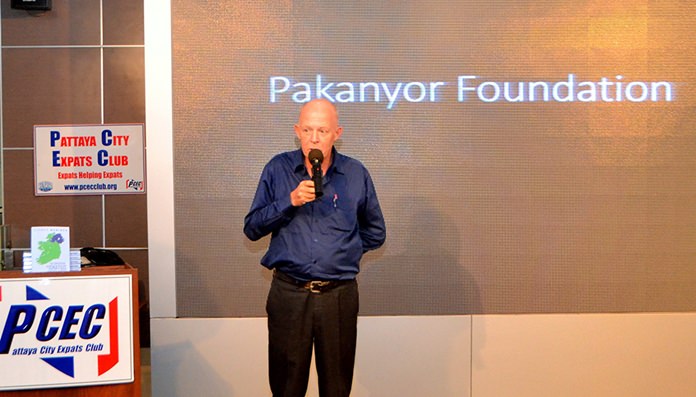
Thai authorities and media have traditionally said that all hill tribe groups are involved in opium production. The truth, Jim mentioned, is that the Karen are not the least bit interested in narcotics. Further, the Karen did not fit in very well with the Thais. The Karen have a strong moral code. A Karen caught using narcotics was excommunicated. Karens who committed adultery were flogged and either killed or, if they were lucky, given some clothes and money to get away.
Until the last 25 years or so, the Karen villages did not have headmen, Jim explained. Everything was decided by consensus – “unanimity” would be a more accurate way to describe it; everyone in the village had to agree before any kind of project would be started. The result was that sometimes it took a long time to get something decided, but at least you knew that the whole village backed the decision.
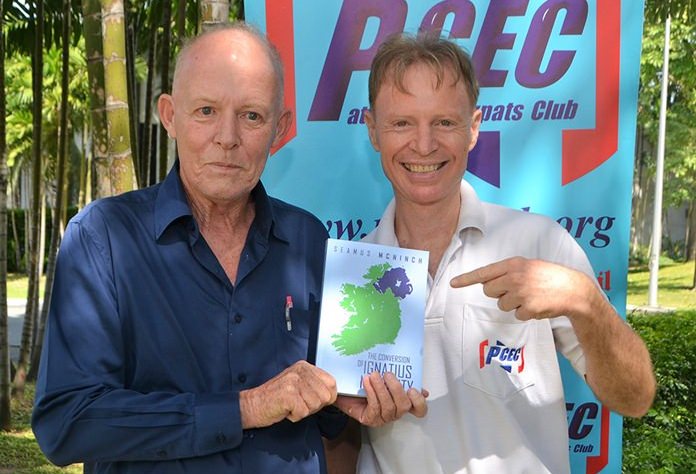
Jim said that Thai authorities would not allow the Karen to move their villages to a different site. The result was that the same earth was used year after year to grow crops. (The ideal system is to work on a ten-year cycle, with one tract of land being farmed each year while the other nine tracts lay fallow.) Not surprisingly, the ground became less and less fertile. The fertilizers they added, along with the herbicides and pesticides, polluted the water table. Babies began to get sick. Other people too.
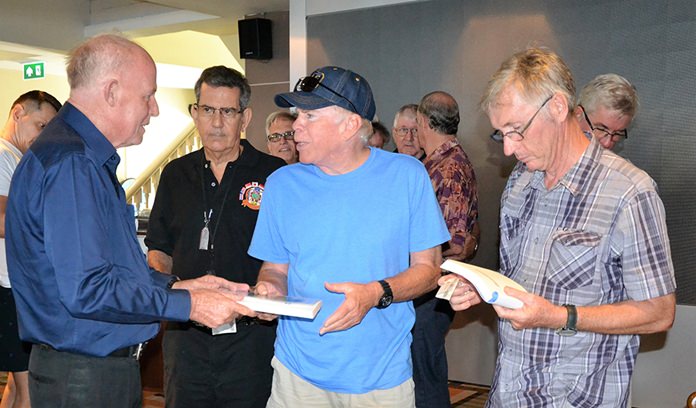
The solution, Jim said, was to find clean water. But the women and children had to walk up to 10 km to get water (while the men hunted). So, Jim described how his foundation located some sources of water in the mountains above the villages. They set up a system whereby the water flowed to catchment areas, and then to tanks and, from there, to the villages through pipes. Once the system was operating, post-natal mortality fell by almost 100%.
Jim explained that there are a limited number of villages his foundation can help each year because the work has to be done during the dry season. Using foundation volunteers and women from the village, each project takes about three weeks to complete. Jim said that the foundation volunteers could do it faster working on their own, but that it was important to pass on the skills to the Karen people.
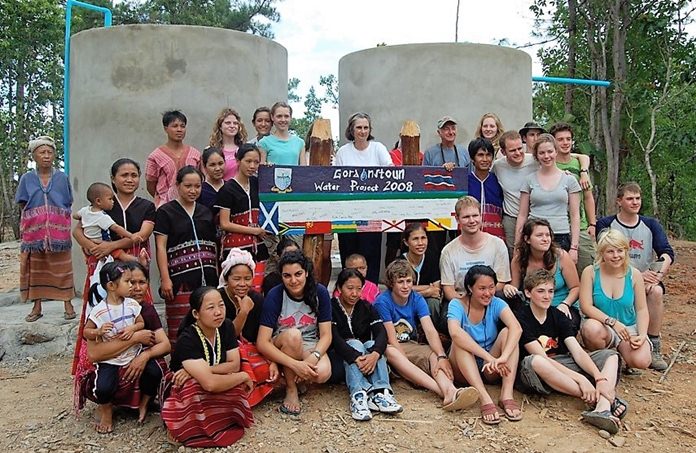
Eventually, the Pakanyor Foundation wants to teach health and hygiene, and education. The foundation already runs a series of infant development centres. Jim said that 11 graduates of these centres went to Thai schools. They finished at the top of all students in the school in the entrance exams and, later, in the matriculation exams.
Jim has written a novel, “The Conversion of Ignatius Moriarty”, published under the pen name of Seamus McNinch. It is a black comedy of errors, which – to those who can read between the lines – exposes some horrible truths about the Troubles in Northern Ireland and the current leadership of that country. He made several copies available for purchase and said the proceeds will go to the Pakanyor Foundation.
After the presentation, MC Roy Albiston brought everyone up to date on upcoming events and was followed with the Open Forum where questions are asked and answered about Expat living in Thailand, especially Pattaya.
For more information on the PCEC’s many activities, visit their website at www.pcecclub.org.


